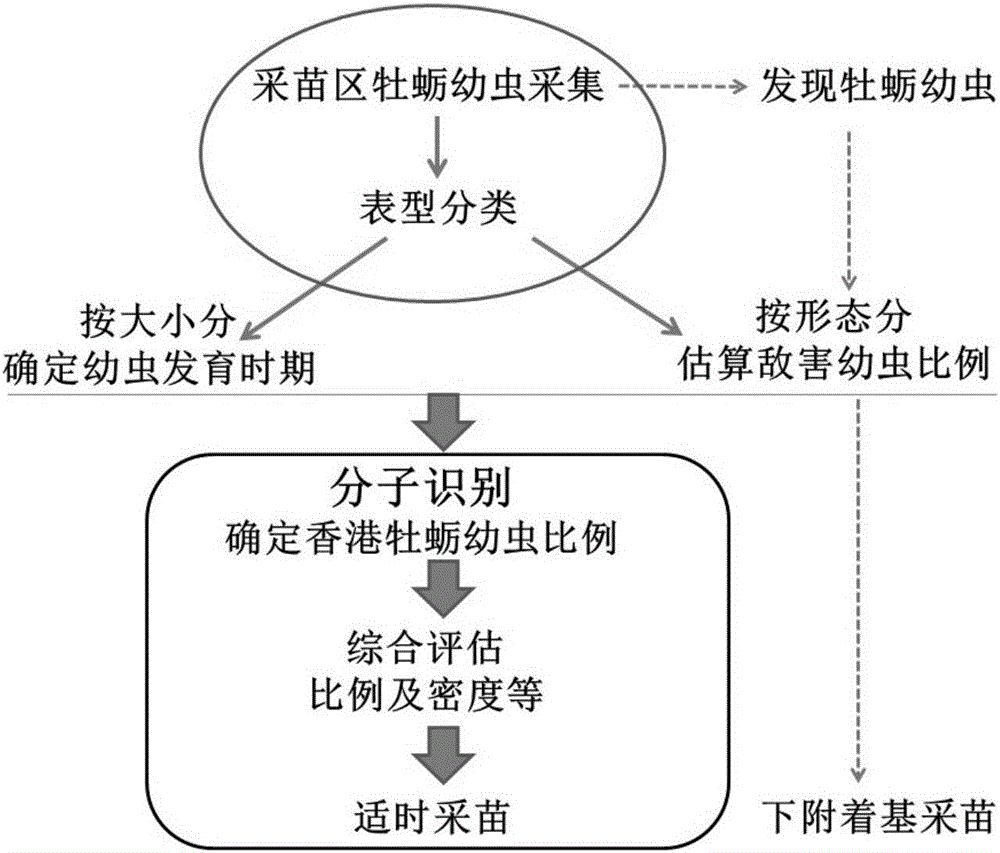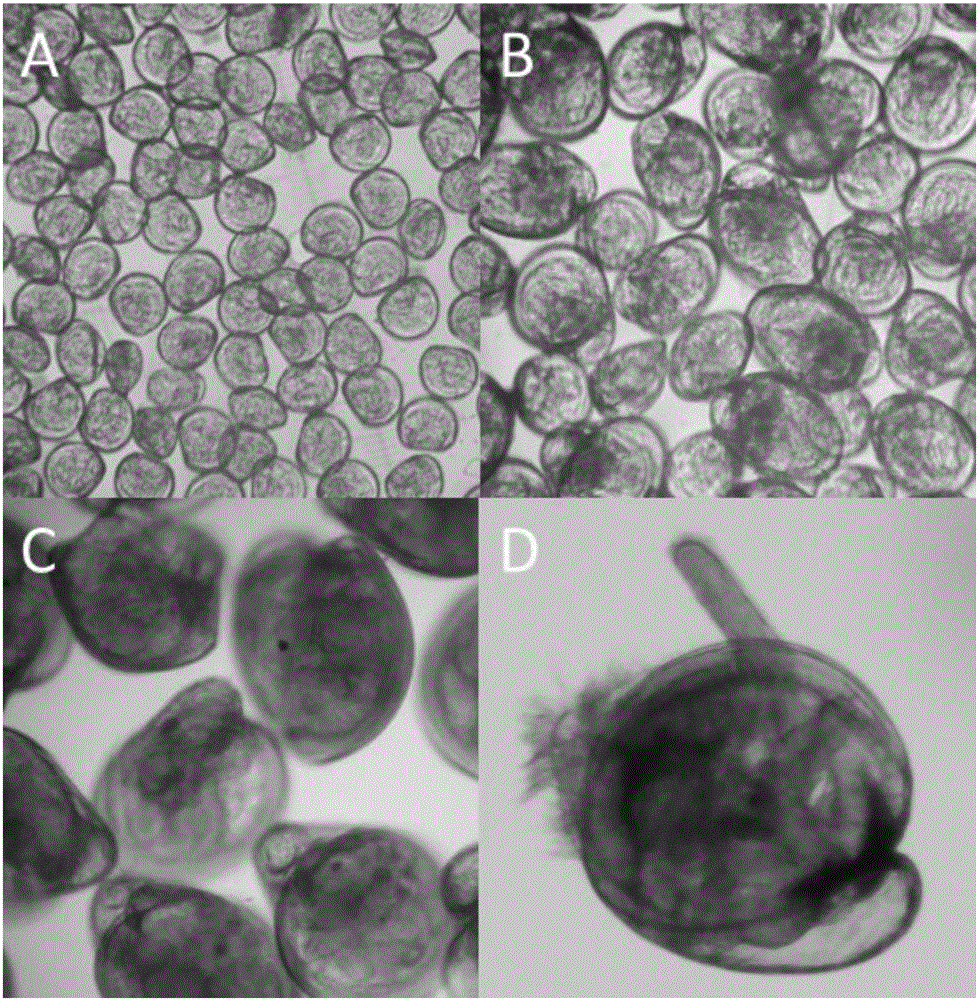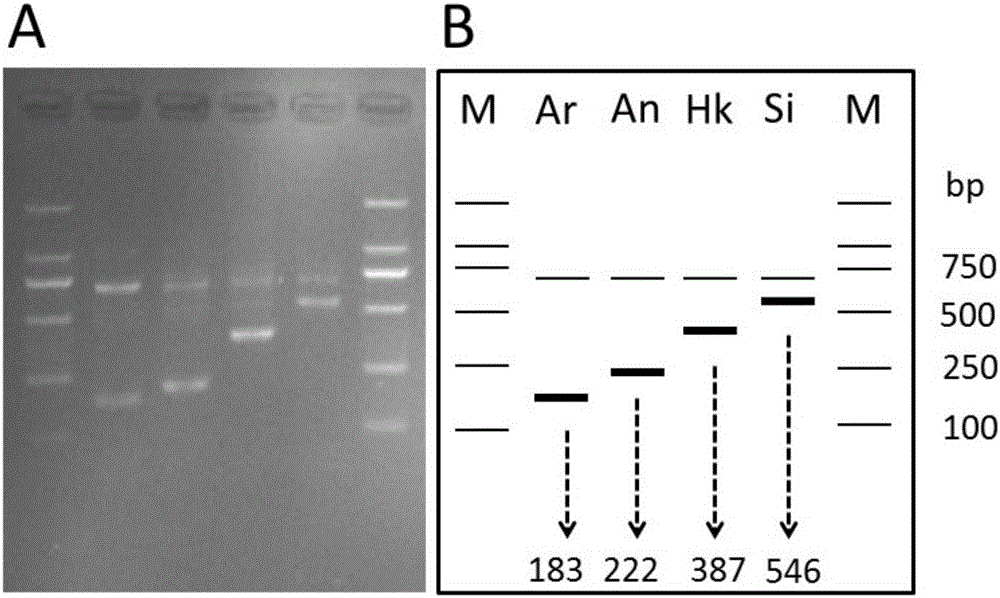A Forecasting Method for Improving the Efficiency of Natural Seedling Harvesting of Hong Kong Oyster
A technology of Hong Kong oysters and oysters, applied in the field of forecasting to improve the efficiency of natural seedling harvesting of Hong Kong oysters, to achieve the effects of ensuring the quality of seedlings, increasing the quantity of natural seedlings, and solving the instability of quantity
- Summary
- Abstract
- Description
- Claims
- Application Information
AI Technical Summary
Problems solved by technology
Method used
Image
Examples
Embodiment 1
[0028] This embodiment improves the forecasting method of Hong Kong oyster natural seedling harvesting efficiency, and its technical scheme is as follows figure 1 As shown, the specific steps are:
[0029] (a) Collection of larvae: From June to July 2013, during the breeding season of oysters in Hong Kong, oyster samples were regularly collected in Guandu, Zhanjiang, to observe whether oviposition and semen were laid. On June 20, after the typhoon passed, the oysters were found to be thin, and there were oyster larvae in the sea area. After 15 days, the larvae developed to the pre-eye point larvae, and the shellfish larvae were collected at 0.5-1.0m on the surface of the sea area with a 300-mesh silk net. , after concentration, placed in a sampling bottle as a sample.
[0030] (b) Classification of phenotypes: For the collected samples, they are firstly classified by microscope observation. According to the characteristics that the left and right shells of oyster larvae vary...
Embodiment 2
[0043] (a) Collection of larvae: During July-August 2013, during the breeding season of oysters in Hong Kong, after the seedlings of Example 1 were collected in Guandu, Zhanjiang, the gonads of oysters gradually recovered. On July 17, after the tropical storm, it was found that the oyster gonad wasted again, according to figure 1 As shown, after 13 days, the larvae developed to the pre-eye point larvae, and the shellfish larvae were collected at 0.5-1.5m from the surface of the sea area with a 300-mesh silk screen, concentrated, and placed in a sampling bottle as a sample.
[0044] (b) Phenotype classification: According to the method in Example 1, it was found that in this sea area, most of the oyster larvae have entered the early stage of the eye point, and a few are in the early and middle stage of the shell top ( figure 2 ); the sample contained a small number of barnacle larvae. The visual field method was used to count and found that the proportion of oyster larvae was...
PUM
 Login to View More
Login to View More Abstract
Description
Claims
Application Information
 Login to View More
Login to View More - R&D
- Intellectual Property
- Life Sciences
- Materials
- Tech Scout
- Unparalleled Data Quality
- Higher Quality Content
- 60% Fewer Hallucinations
Browse by: Latest US Patents, China's latest patents, Technical Efficacy Thesaurus, Application Domain, Technology Topic, Popular Technical Reports.
© 2025 PatSnap. All rights reserved.Legal|Privacy policy|Modern Slavery Act Transparency Statement|Sitemap|About US| Contact US: help@patsnap.com



